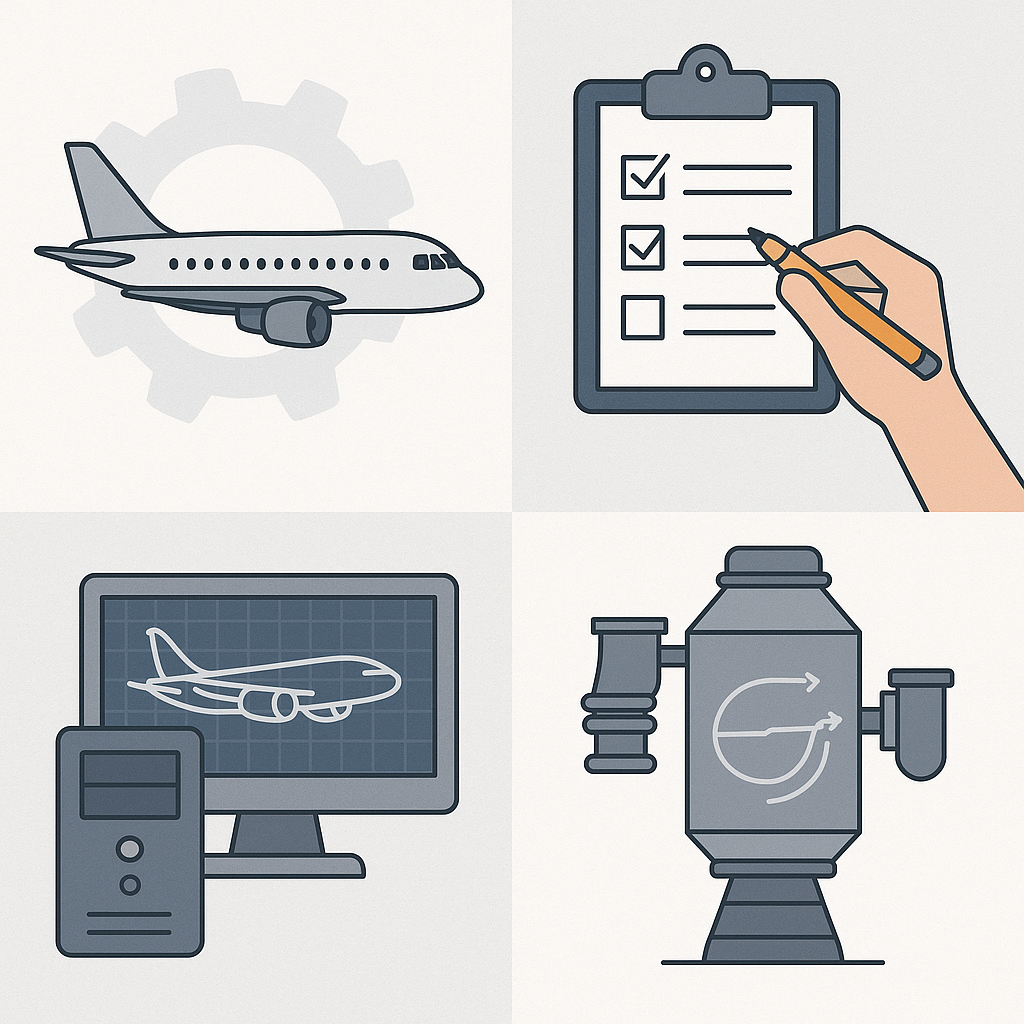Advance your aerospace innovation — and your bottom line. U.S. companies designing new aircraft, developing avionics or improving aerospace manufacturing processes often qualify for the federal R&D Tax Credit under IRC §41. Whether you're building lighter airframes, automating composite layups or testing new propulsion control systems, many of these activities count as qualified research — and can generate valuable tax savings


Examples of Qualifying Activities in Aerospace Engineering
- New Airframe or Structural Component Design Iterating on fuselage shapes, designing wingtip geometries for drag reduction, optimizing rib/spar structures for manufacturability and strength.
- Composite Materials & Assembly Method Development Evaluating new carbon fiber materials, testing bonding methods, developing heat-forming or curing processes, solving delamination or void issues during layup.
- Flight Control & Avionics System Development Building and testing flight algorithms, integrating sensors, reducing EMI or latency in avionics, developing autonomous backup systems or pilot-assist functions.
- Manufacturing Line Adaptation & Tooling Innovation Creating or improving jigs/fixtures for assembly precision, prototyping robotic systems for rivet/fastener operations, refining composite curing environments for repeatability.
- Thermal & Environmental Systems Testing Running vibration, acoustic, thermal-cycle or stress tests on components; using wind tunnels or high-altitude simulation to validate design tolerances.
- Weight Reduction & Sustainability Projects Exploring alternative lightweight alloys, redesigning subsystems for modularity, or extending component lifecycles to reduce overhaul frequency.
What qualifies as R&D in Aerospace Engineering?

Your aerospace activities may qualify if they:
- Target a permitted purpose — such as a new or improved airframe design, composite joining method, control algorithm, or production process for high-performance aerospace parts.
- Address technical uncertainty — e.g., “Can we maintain airframe strength with 20% less material?”, “Will the new composite layup technique pass fatigue testing?”, “How can we reduce weight without compromising system redundancy?”
- Use a process of experimentation — including design iterations, simulation (e.g., FEA, CFD), prototype builds, test-stand evaluations, or NDT validation.
- Are technological in nature — grounded in mechanical, electrical or aerospace engineering, avionics, materials science or control systems.
These criteria follow the IRS’s four-part test for R&D — and apply specifically to the type of work aerospace firms perform every day.
Qualified Research Expenses (QREs)
Common Roles Involved in Qualifying Aerospace R&D
- Aerospace & structural engineers
- Materials and composites specialists
- Avionics & software developers
- Tooling and process improvement engineers
- Simulation analysts (FEA/CFD)
- External research or test labs
What does not qualify
- Routine assembly work with no design/test changes
- Production using proven methods or off-the-shelf parts
- Sales, finance, marketing, or general admin activity
- Facility upgrades or capital assets not tied to R&D
- Maintenance work unrelated to experimentation
Compliance and Documentation
Following the One Big Beautiful Bill Act (OBBBA) signed July 4, 2025, §174 now allows immediate expensing of domestic research expenses for tax years beginning on or after January 1, 2025. Taxpayers may also elect optional amortization under new §174A. Foreign research expenses must still be amortized over 15 years. This is separate from the §41 credit but impacts overall tax planning.
Key Documentation You Should Maintain:
- Design iterations, CAD files, version control logs
- Simulation results, bench test data, and rework records
- Time logs for engineers and test personnel
- Prototype material orders, test bed logs
- Engineering change notices (ECNs), NPI documentation
Strong records strengthen claims and help satisfy the IRS’s four-part test (purpose, uncertainty, experimentation, technology).
Frequently Asked Questions


Yes — companies building new aircraft, improving systems, or running aerospace experiments (structural, control, thermal, etc.) can qualify if the work involves uncertainty and testing.


Standard production, routine QA, admin tasks, or deploying existing off-the-shelf parts without testing or redesign.


Savings vary by size and scope. Some firms claim credits equal to 10%–15% of qualified expenses (federal only), and more when state credits apply.


Track time spent on eligible projects, retain design/test records, log all changes and rationale, and store simulation/prototype outcomes — including failures.


Wages of engineering and test staff, materials used in prototypes, R&D software, and qualifying third-party test services.
Next Steps
Use our calculator to estimate your potential federal and state benefits
Schedule a consultation to structure your row crop research activities
If you are innovating in agriculture, you may already be doing R&D. Let's make sure you are rewarded for it.
Contact Strike Tax Advisory
Ready to maximize your R&D tax credits? Get in touch with our team of experts.






